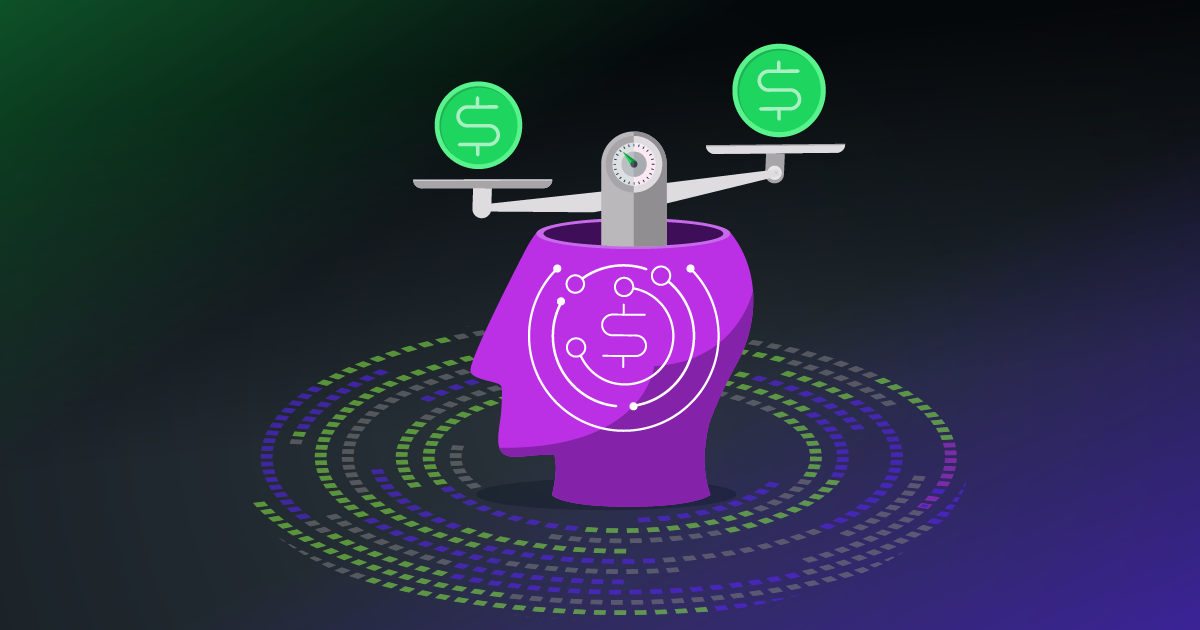Webinar
Monetizing AI: Comparing Pricing Models and Monetization Strategies
Explore how software providers can price AI features, model ROI, and drive growth with real-world strategies and statistical experiments.
Original Air Date: April 3, 2024
Overview
Generative AI is transforming software products—but how do you turn that innovation into revenue?
In this webinar, you'll hear from Michael Goff, Principal Product Marketing Manager at Revenera, alongside Tristan Kromer, Innovation Coach and CEO of Chromatic, and Revenera’s Senior Directors of Product Management, Alex Rybak and Paul Bland. Together, they unpack the real-world challenges and opportunities of monetizing AI, from pricing models and cost structures to go-to-market strategies.
You’ll learn how software producers are navigating consumption-based, subscription, and outcome-driven pricing—and why traditional SaaS models often fall short. Discover how statistical experiments can help validate pricing hypotheses and forecast revenue impact.
Whether you're embedding AI into existing offerings or launching standalone solutions, this session will help you make smarter, data-driven decisions. Plus, you'll get access to tools, templates, and the 2025 Monetization Monitor to support your strategy. Don’t miss this chance to gain practical insights that can drive profitability and competitive advantage.
Recap
Key Themes and Takeaways
Understanding the Current Landscape of Generative AI Monetization
The webinar opens with a comprehensive overview of the generative AI (GenAI) market, highlighting key metrics from IDC reports. Notably, 80% of buyers are satisfied with their AI investments, and over 60% are willing to pay more for AI capabilities. However, top concerns include security (50%), cost variability (39%), and data quality (61%). These insights underscore both the opportunity and complexity of monetizing AI features, especially as nearly half of software buyers now consider AI a critical purchasing criterion.
Evaluating AI Pricing Models: Consumption, Subscription, and Outcome-Based
Three primary pricing models for AI capabilities were discussed: consumption-based, subscription-based, and outcome-based. Consumption-based models charge based on usage (e.g., tokens or minutes), subscription models offer access for a flat fee, and outcome-based models tie pricing to business results (e.g., successful support ticket resolution). Each model has trade-offs in terms of cost predictability, customer value alignment, and margin protection, making it essential for software providers to choose the right fit based on their product and customer expectations.
Challenges with Traditional Monetization Models for AI
Traditional SaaS pricing models, such as flat subscriptions or per-user fees, often fail to account for the variable costs introduced by AI features. As usage increases, so do compute and storage costs, potentially eroding margins. The webinar emphasizes the need for hybrid models that combine fixed and variable pricing to better align with the cost structure of AI services. This is particularly important when integrating third-party AI capabilities, which may carry additional licensing or usage fees.
Breakdown of AI Cost Categories and Their Impact on Profitability
A detailed analysis of AI-related costs was provided, including model training (often prohibitively expensive), processing (20–50% increase over current operations), storage and data handling (10–20% increase), specialized AI services (10–20% premium), and scaling requirements. These costs can add 10–20% for small-scale deployments and up to 200% for large-scale implementations. Understanding these cost drivers is critical for accurate ROI modeling and pricing strategy development.
Real-World Examples of AI Monetization Strategies
Five companies were profiled to illustrate different monetization approaches: Adobe increased subscription prices and added token-based AI usage; Zenes adopted an outcome-based model; Zoom bundled AI features into existing subscriptions; Microsoft Copilot added a $30/user/month fee; and Otter.ai used a consumption-based model charging by minutes. These examples demonstrate the diversity of strategies and the importance of aligning pricing with customer value and usage patterns.
Using Statistical Experiments and Monte Carlo Simulations for Pricing Validation
Tristan Kromer introduced the concept of using statistical experiments and Monte Carlo simulations to validate pricing hypotheses and forecast revenue outcomes. Traditional financial models often rely on best-case/worst-case scenarios, which lack accuracy. Monte Carlo simulations, by contrast, use probability distributions and thousands of iterations to model uncertainty and provide a more realistic range of outcomes. This approach helps product managers make informed decisions under uncertainty and avoid costly miscalculations.
Building Hypothesis-Driven Financial Models for AI Features
The webinar showcased how to build hypothesis-driven financial models that link user behavior (e.g., conversion rates, retention) to financial outcomes. By mapping user journeys and identifying key metrics, product teams can create dynamic models that test assumptions and simulate different pricing scenarios. This method allows for early-stage validation using MVPs and small sample sizes, with the ability to refine models as more data becomes available.
Quantifying Uncertainty and Sensitivity Analysis
A key takeaway was the importance of quantifying uncertainty in financial models. By assigning ranges to variables (e.g., activation rates, revenue per customer), teams can run sensitivity analyses to identify which assumptions have the greatest impact on profitability. This helps prioritize data collection and experimentation efforts, ensuring that resources are focused on reducing uncertainty in the most critical areas.
Elastic Access: A New Monetization Model for Variable AI Costs
Paul Bland introduced Revenera’s new monetization capability, Elastic Access, which allows software providers to sell prepaid consumption tokens. This model is particularly suited for GenAI features with variable costs, enabling flexible pricing that aligns with usage. Elastic Access supports both prepaid and postpaid models, addressing preferences from both producers and customers. It also provides granular usage data to feed back into financial models, enabling continuous refinement and optimization.
Closing Thoughts: Aligning Pricing Strategy with Business Goals
The webinar concluded with a discussion on the strategic implications of AI monetization. While consumption-based models offer flexibility, they must be carefully balanced with cost structures and customer expectations. The speakers emphasized the importance of aligning pricing strategy with broader business goals, using data-driven experimentation and modeling to guide decisions and maximize profitability.
Speakers

Alex Rybak
Senior Director of Product Management
Revenera

Paul Bland
Senior Director, Technical Product Management
Revenera

Tristan Kromer
Founder and CEO
Kromatic
Frequently Asked Questions
Subscription, consumption-based, and outcome-based pricing models are the most commonly used approaches for monetizing AI. Subscription models offer predictable revenue, while consumption-based pricing aligns with variable usage costs. Outcome-based pricing ties revenue to business results, such as successful task completion. Each model has trade-offs, and choosing the right one depends on your product’s value proposition and cost structure.
Traditional SaaS models like flat-rate subscriptions or per-user pricing often fail to account for the variable costs introduced by AI features. As usage increases, so do compute and storage costs, which can erode margins. AI monetization requires hybrid models that combine fixed and variable pricing to better reflect the cost dynamics of AI services.
AI costs can be broken down into five categories: model training, processing, storage and data handling, specialized services, and scaling requirements. Model training is typically the most expensive, while processing and scaling costs vary based on usage complexity. Small-scale deployments may add 10–20% to cloud costs, while large-scale implementations can increase costs by 50–200%.
Companies like Adobe, Zoom, Microsoft, and Otter.ai have adopted different monetization strategies for AI. Adobe uses a subscription model with token-based add-ons, Zoom bundles AI into existing plans, Microsoft charges a per-user fee for Copilot, and Otter.ai uses consumption-based pricing. These examples show how AI can be monetized as part of core offerings, add-ons, or standalone products.
Statistical experiments, including Monte Carlo simulations, allow software producers to test pricing hypotheses under uncertainty. By modeling a range of outcomes based on variable inputs like conversion rates and usage patterns, teams can forecast revenue more accurately. This approach helps avoid overconfidence in best-case scenarios and supports data-driven decision-making.
A Monte Carlo simulation runs thousands of pricing and usage scenarios using probability distributions for key variables. It helps quantify uncertainty and provides a realistic range of financial outcomes. This method is especially valuable for AI features, where costs and user behavior are unpredictable, and traditional financial models fall short.
The decision depends on your product strategy, customer expectations, and cost structure. Core features may justify a price increase, add-ons can be monetized separately, and standalone products offer flexibility in pricing. Consider whether AI enhances existing value or introduces new capabilities, and model the financial impact accordingly.
Security, cost variability, and data quality are the top concerns among AI buyers. About half worry about security risks, 39% are concerned about unpredictable costs, and 61% want assurance that data used by AI is accurate and unbiased. Addressing these concerns is critical for adoption and pricing acceptance.
Outcome-based pricing is one way to align cost with value, charging customers only when AI delivers measurable results. Alternatively, usage-based models can reflect actual consumption, while subscription models offer simplicity. The key is to understand what customers value most—speed, productivity, automation—and price accordingly.
Hypothesis-driven financial models and innovation accounting frameworks are recommended. These models link user behavior (e.g., conversion rates, retention) to financial outcomes and allow for scenario testing. Monte Carlo simulations can be layered on top to quantify uncertainty and refine assumptions over time.
Resources
Webinar
Unlock the Power of Monetization Analytics: Drive Growth, Renewals, and Customer Success
Thursday, December 4, 2025
Join us for an exclusive webinar led by industry experts, where we’ll explore how actionable analytics are transforming software monetization strategies. Secure your spot and get ready to transform your approach to software monetization.
Report
Monetization Monitor: Software Piracy and License Compliance 2026 Outlook
Revenera’s latest research report examines emerging trends in the prevalence and scope of unlicensed software usage and demonstrates how leveraging usage analytics or compliance analytics can enhance revenue recognition opportunities.
Webinar
Pricing as a Profitability Lever in the Cloud and AI Era
In this session, Paul Bland, Senior Director of Technical Product Management for Revenera, and Philip Daus, Partner at Simon-Kucher, will share actionable ideas to counter rising costs, protect profitability, and adapt your pricing for the AI era
Want to learn more?
See how Revenera's Software Monetization platform can help you take products to market fast, unlock the value of your IP and accelerate revenue growth.
